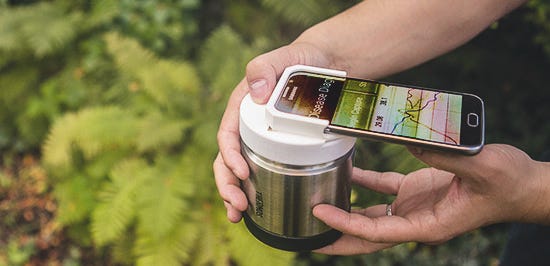Target: Zika — A Low-Cost Diagnostic for Developing Nations

As viruses go, Zika is ruthlessly efficient. Since 2015, when Brazil reported its first few cases, the illness has moved with astonishing speed, infecting millions of residents throughout Central and South America, and more recently, the continental United States. In most patients, its symptoms are mild: bloodshot eyes, skin rash, flu-like exhaustion — but in pregnant women, the consequences become far more severe. When the virus emerged in Brazil, so too did hundreds of newborns with microcephaly (an abnormally small head and brain), a condition that can cause a lifetime of developmental problems. In nearly every case, the afflicted baby’s mother had contracted Zika during pregnancy.
Despite its devastating effects on newborns, testing for the virus can be a major challenge in developing nations where infrastructure is often in disrepair, says Haim Bau, professor in Mechanical Engineering and Applied Mechanics (MEAM).
“Most of the labs in those areas that can identify Zika are not located in close proximity to a patient, and systems for transporting samples from patients aren’t well developed,” he says. “That means samples can be degraded during shipping, or the results might not make it back to the patient.”
Rather than shipping samples to distant labs, Bau is working on a device that lets rural clinics test for the disease directly. Earlier this year, he collaborated with Changchun Liu, research associate professor in MEAM, to create a prototype that they’re hoping will give doctors a new tool in the fight against Zika. The device they’ve created is roughly the size of a soda can, and provides a diagnosis in the field without the need for a lab, electricity, or even a trained technician.
LAB-ON-A-CHIP
To use the device, caregivers take a small sample of saliva, blood, stool or urine from a patient and place it onto a small plastic cartridge. Tiny channels and porous membranes inside help to concentrate and filter the sample’s content, acting as a miniature “lab-on-a-chip,” automating processes that normally are done by several different benchtop machines.
“Instead of having a human or even a robot carry a sample from one lab machine to another, we put all those operations onto the chip, and it transfers the material from one operation into another,” Bau says. “It eliminates an expert from the process, so even minimally trained or even untrained personnel can carry out these sorts of analyses and get relatively quick results.”
If specific Zika genes are present in the sample, a special dye already inside the device changes color, giving doctors a clear indication that the patient’s results are positive. In all, the whole process takes only about 40 minutes.
GETTING WARMER
Right now, Liu says, the most reliable way to confirm the disease is through a process called Polymerase Chain Reaction (PCR), which can sniff out tiny amounts of genetic material from the Zika virus and multiply it millions of times. As new copies of the virus’ genes accumulate, they eventually reach high enough levels to be seen and identified. The catch, however, is that PCR uses carefully controlled cycles of heating and cooling to make those copies, and so relies on sophisticated (and often expensive) lab equipment.
To get around that problem, Bau and Liu have focused on a relatively new detection method called “Reverse Transcription Loop-Mediated Isothermal Amplification” (RT-LAMP). It’s a mouthful of a technique, but it has a few key advantages. Like PCR, it homes in on nucleic acids, giving incredibly accurate test results, but does so at a fixed temperature rather than using computer-controlled cycles. That may seem like a small distinction, but it means that the process no longer needs complex lab equipment. Instead, it can be run on a surprisingly small and low-tech heat source.
“We use a method similar to how soldiers cook military rations in the field,” says Bau. “It’s a chemical reaction that creates heat by mixing water with magnesium alloy.” The reaction takes place next to a block of paraffin wax that absorbs excess heat as it slowly melts, keeping the temperature stable. Simple materials like these have the added benefit of keeping costs down. Each device, he estimates, would cost only a few dollars to make.
THINKING BIG
Zika isn’t the only disease that Bau and Liu have tackled. They’re currently expanding their “lab-on-a-chip” work to create diagnostics for HIV and other viruses, providing low-cost tools for doctors in developing nations. “There’s a real need, especially in the developing world, for these diagnostic products. We’re driven to solve realworld problems that are affecting the life and health of many individuals around planet,” says Liu.
Bau and Liu’s focus on tackling health issues worldwide has attracted a wide range of students at all levels, from undergraduate to doctoral, to their labs. In one case, they’ve even engaged a junior in high school. “He wrote us an email wanting to get involved, and he’s really exceeded our expectations,” says Bau.
That’s not entirely surprising, given that Bau’s unofficial mantra for students is to “think big, work hard, and get it done,” a challenge that his lab meets on a daily basis. “We like challenges, and being engineers, we like to solve problems,” he says. “That’s what engineers do.”
